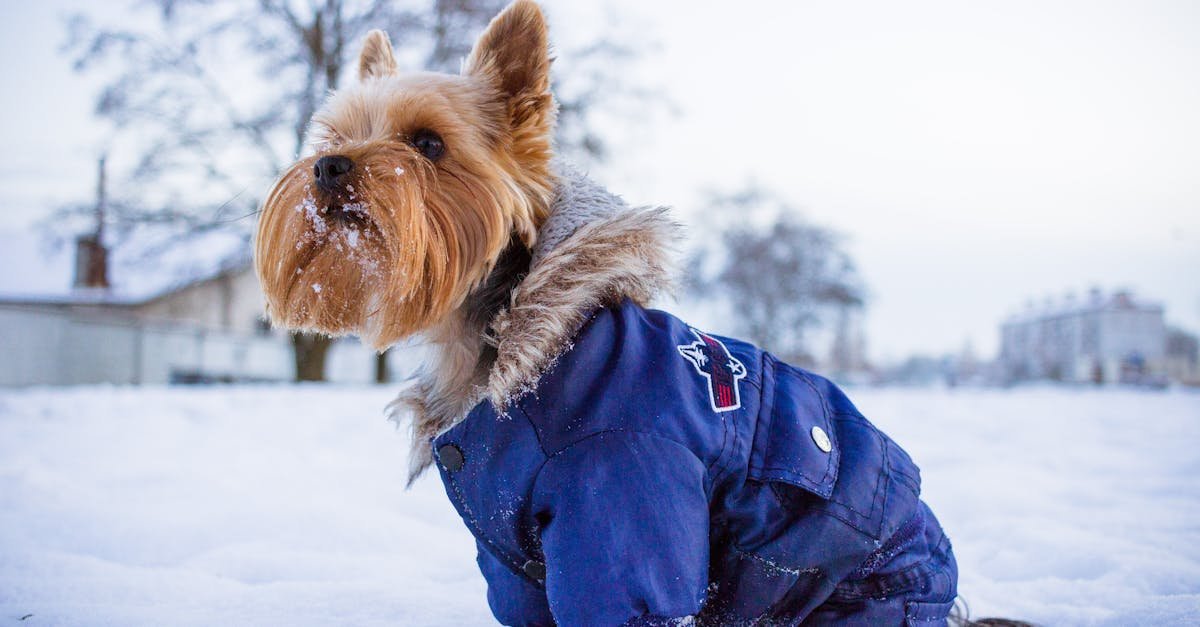
Dog Winter Care: Essential Tips to Keep Your Pup Safe & Healthy
Estimated reading time: 8 minutes
Dog Winter Care: Key Takeaways
- Small and short-haired breeds need extra protection from cold weather risks like hypothermia and frostbite.
- Quality winter coats with insulation and waterproofing are essential for vulnerable dogs.
- Paw protection is crucial against ice, salt, and chemical de-icers that can cause burns or cracks.
- Outdoor dogs require shelter upgrades and adjusted routines in freezing temperatures.
- Indoor activities keep dogs mentally and physically stimulated when outdoor play is limited.
Table of Contents
- Choosing the Best Winter Coats for Small Dogs
- How to Protect Dog Paws from Snow and Ice
- Winter Safety Tips for Outdoor Dogs
- Dog-Friendly Indoor Activities in Winter
- Frequently Asked Questions
Choosing the Best Winter Coats for Small Dogs
Why Small Dogs Need Extra Protection
Small breeds like Chihuahuas, Dachshunds, and Toy Poodles lose body heat faster than larger dogs. Their tiny bodies and thin fur make them more susceptible to cold weather risks (AKC). Even short-haired larger breeds, such as Greyhounds, benefit from extra insulation.
Key Features of a Quality Dog Winter Coat
When shopping for the best winter coats for small dogs, look for these must-have features:
- Insulation: Fleece or thermal linings trap body heat effectively (Freshpet).
- Waterproofing: Nylon or polyester shells repel snow, sleet, and rain.
- Secure Fit: The coat should cover the neck and belly without restricting movement.
- Adjustable Straps: Velcro or buckles ensure a snug fit.
Top Winter Coat Recommendations
Some trusted brands for dog coats include:
- Ruffwear – Durable and weather-resistant.
- Hurtta – Excellent for extreme cold.
- RC Pets – Lightweight yet warm.
Pro Tip: Measure your dog’s chest and back length before buying to ensure the perfect fit.
How to Protect Dog Paws from Snow and Ice
Winter Paw Hazards
Ice, salt, and chemical de-icers can cause painful cracks, burns, or even frostbite on your dog’s sensitive paw pads (PetMD). For year-round paw care, explore our Ultimate Guide to Dog Paw Protection in All Seasons.
Best Ways to Shield Your Dog’s Paws
Here’s how to keep paws safe:
- Dog Boots: Waterproof, non-slip boots (like Pawz rubber boots) protect against ice and salt (Freshpet).
- Paw Balm: Apply wax-based balms (e.g., Musher’s Secret) before walks to create a protective barrier.
- Post-Walk Cleaning: Wipe paws with a damp cloth to remove salt and chemicals.
Signs of Frostbite in Dogs
Watch for:
- Pale, blue, or gray skin on paws, ears, or tail.
- Swelling or blisters.
If you notice these signs, warm the area gently with lukewarm water and consult a vet immediately (AKC).
Winter Safety Tips for Outdoor Dogs
Adjusting Outdoor Time in Cold Weather
Even hardy breeds need shorter walks in freezing temperatures. If it’s too cold for you, it’s too cold for your dog!
- Limit outdoor playtime in sub-zero weather.
- Avoid early morning/late night walks when temperatures drop the most.
Essential Shelter Upgrades for Outdoor Dogs
If your dog spends time outside, ensure their shelter is winter-ready:
- Insulated Doghouse: Use straw bedding (avoid blankets—they retain moisture).
- Heated Pet Pads: Choose chew-proof, pet-safe options.
- Wind Barrier: Position the doghouse away from drafts.
For more year-round pet safety, check out our Ultimate Guide to Pet Safety: Securing Your Home Indoors and Outdoors.
Hypothermia Warning Signs
Symptoms include:
- Violent shivering
- Lethargy
- Shallow breathing
If you suspect hypothermia, bring your dog indoors, wrap them in warm towels, and contact your vet (AKC).
Dog-Friendly Indoor Activities in Winter
Why Indoor Play Matters
Cold weather can lead to boredom and weight gain if outdoor exercise is limited. Keeping your dog mentally and physically active is key (Freshpet). For more ideas, see our Ultimate Guide to Pet Fitness: Keeping Dogs and Cats Happy & Healthy.
Fun Indoor Winter Activities for Dogs
Try these dog-friendly indoor activities in winter:
- Puzzle Toys: Treat-dispensing toys (like Kong) keep dogs engaged.
- Hide & Seek: Hide treats or toys to stimulate their scent skills.
- Training Sessions: Teach new tricks like “spin” or “high five.”
- Tug-of-War or Fetch Indoors: Use soft toys in a hallway or living room.
For pets prone to seasonal stress, explore Nurturing Pet Mental Health: A Compassionate Guide to Happy, Balanced Companions.
Frequently Asked Questions
- What coats are best for small dogs?
- How to protect paws in winter?
- Signs of hypothermia in dogs?
- Best indoor activities for dogs?
What coats are best for small dogs?
Look for insulated, waterproof coats with adjustable straps. Brands like Ruffwear, Hurtta, and RC Pets offer excellent options for small breeds.
How to protect paws in winter?
Use dog boots or paw balm before walks, and wipe paws clean afterward to remove salt and chemicals.
Signs of hypothermia in dogs?
Watch for shivering, lethargy, and shallow breathing. If symptoms appear, warm your dog immediately and contact a vet.
Best indoor activities for dogs?
Puzzle toys, hide & seek, training sessions, and indoor fetch are great ways to keep dogs active during winter.
